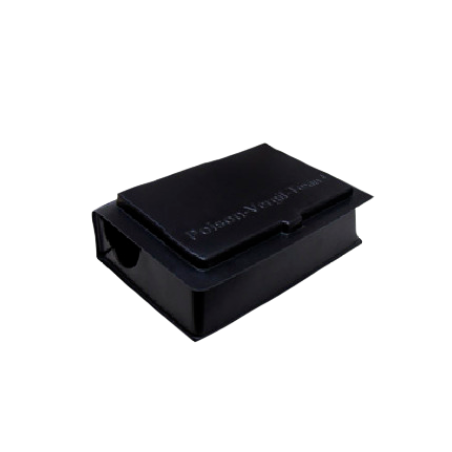Tear staining or chromodacryorrhea refers to a dark stain below the inner corner of the eye, caused by porphyrin-pigmented secretion from the Harderian gland. It has been shown to be a consistent indicator of stress in rats and to correlate with social stress and a barren environment in pigs. The current study was, to our knowledge, the first to test it on commercial pig farms as a potential welfare indicator. The study was carried out on three commercial farms in Finland, in connection to a larger study on the effects of different types of manipulable objects on tail and ear biting and other behavioural parameters. Farm A was a fattening farm, on which 768 growing-finishing pigs were studied in 73 pens. Farm B had a fattening unit, in which 656 growing-finishing pigs were studied in 44 pens, and a farrowing unit, in which 29 sows and their litters totalling 303 piglets were studied in 29 pens. Farm C was a piglet-producing farm, on which 167 breeder gilts were studied in 24 pens. Data collection included individual-level scoring of tear staining; scoring of tail and ear damage in the growing-finishing pigs and breeder gilts; a novel object test for the piglets; and a novel person test for the growing-finishing pigs on Farm B and the breeder gilts on Farm C.
On Farm A, tear staining was found to correlate with tail damage scores (n=768, r s =0.14, P<0.001) and ear damage scores (n=768, r s =0.16, P<0.001). In the growing-finishing pigs on Farm B, tear staining of the left eye correlated with tail damage (n=656, r s =0.12, P<0.01) and that of the right eye correlated with ear damage (n=656, r s =0.10, P<0.01). On Farm A, tear-staining sores were lower in the treatment with three different types of manipulable objects as compared with controls (mean scores 3.3 and 3.9, respectively, n=31, F29=4.2, P<0.05). In the suckling piglets on Farm B, tear staining correlated with the latency to approach a novel object (n=29, r p =0.41, P<0.05).

Although correlations with tail and ear damage were low, it was concluded that tear staining has promising potential as a new, additional welfare indicator for commercial pig farming. Further research is needed on the mechanisms of tear staining.
H. Telkänranta, J. N. Marchant-Forde and A. Valros. Tear staining in pigs: a potential tool for welfare assessment on commercial farms. animal / Volume 10 / Issue 02 / February 2016, pp 318-325. http://dx.doi.org/10.1017/S175173111500172X




